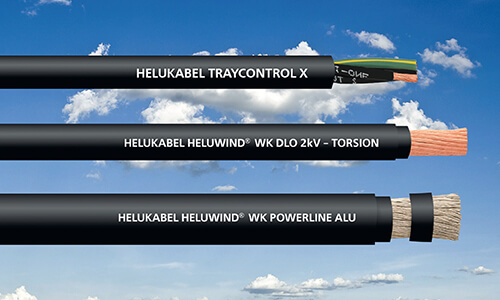
Copper or aluminum? Choosing conductive metals for different industries and applications can be a challenge. Copper has become the standard in cables and wires because of its excel-lent conductivity and malleability. However, it is relatively heavy and expensive compared to aluminum. Switching to aluminum, which is lighter and significantly less costly than copper, is a via-ble option in many cases. Using aluminum successfully is a matter of understanding the capabilities of this conductive metal and how to deal with the challenges it presents. Copper is typically more than twice as expensive as aluminum. This significant difference in price is due to the greater availability of raw aluminum compared to copper. After oxygen and silicon, aluminum is the third most common element in the Earth’s upper crust, while copper is ranked 25th in availability on the list of raw materials. Assessment of current prices is further reinforced by the volatility of the raw materials market. The fluctuations of aluminum are not as volatile as copper, which allows for better material planning.

If aluminum is used as a conductor material, its lower conductivity requires a wire size that is approximately one-third larger than that of a copper wire. In the end however, the insulating material used with the wire plays a crucial role in performance; an aluminum wire can possess the same current carrying capacity as a H07RN-F copper wire. Aluminum’s larger wire size would only be a disadvantage in applications requiring tight spacing, such as when installed in densely packed control cabinets. The facts for aluminum speak for themselves when it comes to the issue of weight. As a raw material, aluminum is approximately 70% lighter in weight than copper. This can be helpful in the efforts of numerous application fields looking to reduce the weight of all components. Naturally, when used in electrical cables, the lower weight makes them easier to install. High-voltage cables have long been made from aluminum; the lighter weight reduces the tensile force placed on wire and masts significantly. But even industries such as auto-motive manufacturing and the aerospace industry are switching to aluminum wires. All the cable harnesses in the Airbus A380 are already made of aluminum. Aluminum wires can be up to 60% lighter than copper wire with comparable current-carrying capacity. Even for applications that re-quire flexible cable connections, copper must not always be the first choice. The HELUWIND® WK POWERLINE ALU series provides a range of fine-wired cables and connection technology.
For more information about HELUKABEL’s WK POWERLINE ALU, please visit https://www.helukabel.com/publication/us/brochures_flyers/wind/wk-powerline-alu.pdf
Sponsored content by Helukabel
Filed Under: Sponsored Content




We had to make that same choice copper or aluminum, we wish we could of stayed with copper but it just became too expensive. At least aluminum has the capabilities but it’s still not the same as copper.
There’s no such thing as a free lunch. Go with what you’ve got.
I am just seeing this article now.. This is great information on aluminum as most people forget how much value it can bring to the table versus copper. This issue most people see is that aluminum has 61 percent of the conductivity of copper, but they don’t see the other side of thing which aluminum has only 30 percent of the weight of copper.
Scandium Alloys of aluminium may well improve your product?